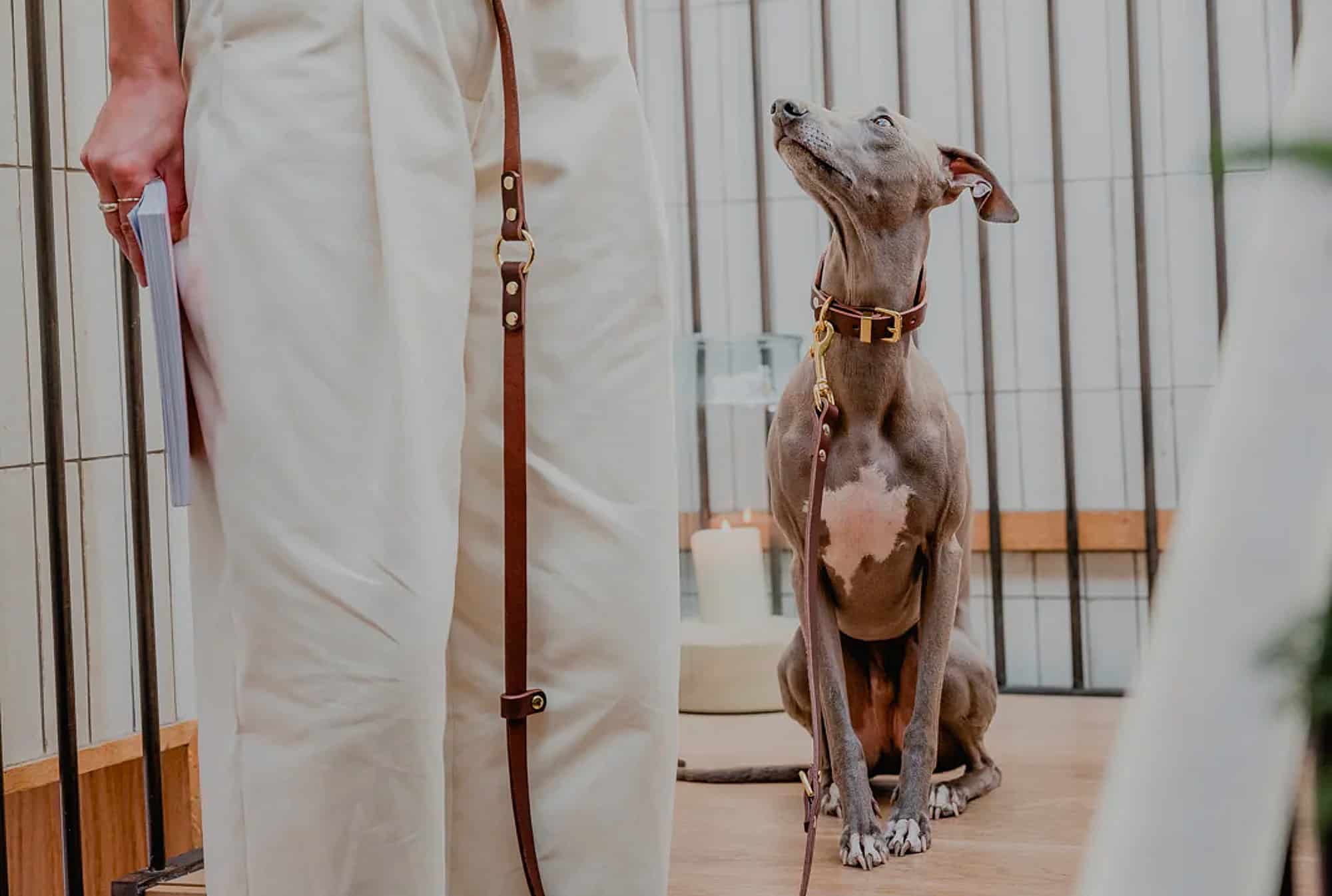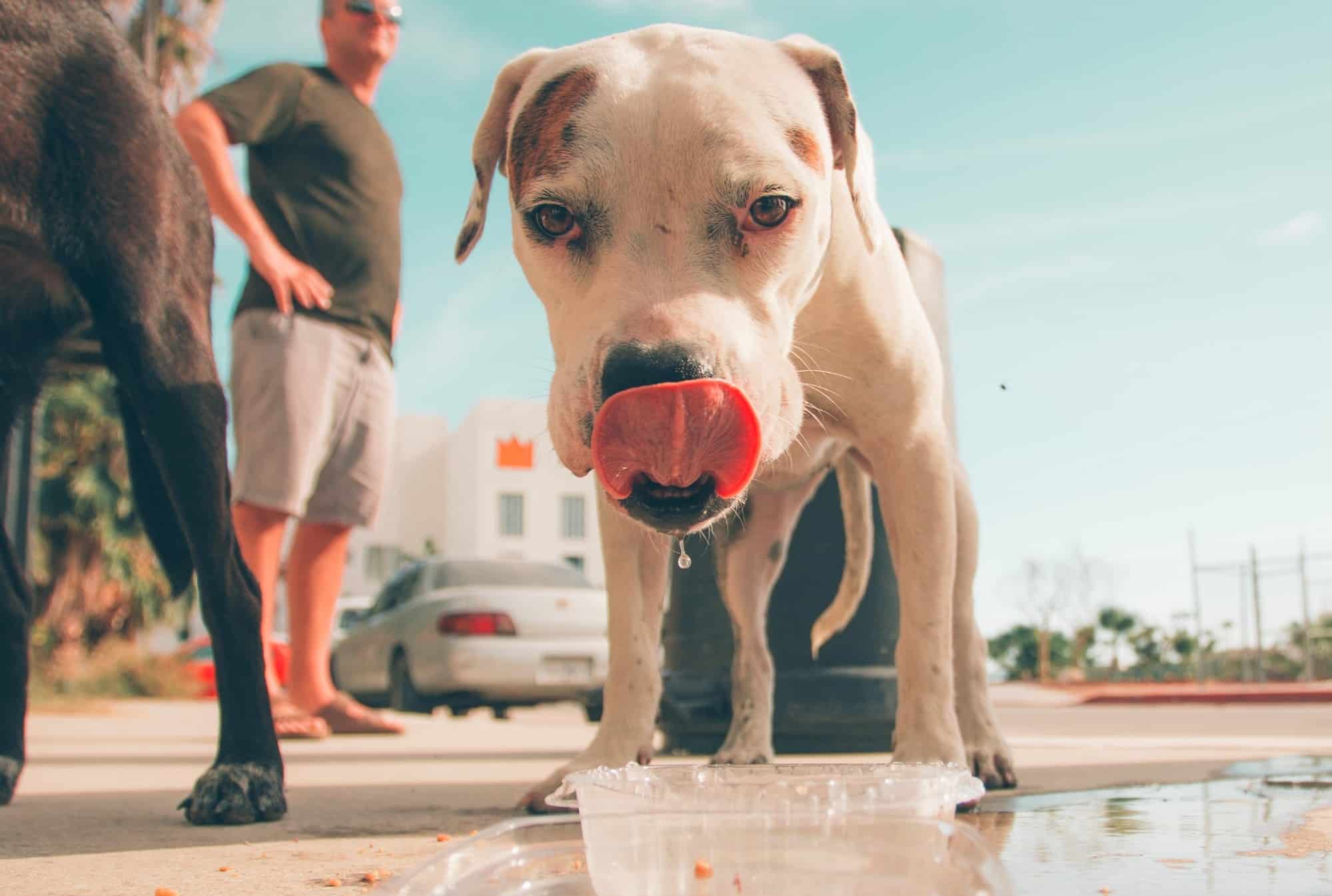If you’re only giving your dog’s water bowl a quick rinse or just refilling it when the water gets low, you might be surprised by what’s lurking in the bottom and on the sides of the bowl. Or what remains in their plastic food dish even after a hot dishwasher cycle. Depending on how often you clean their bowls and what those bowls are made from, your dog’s food and water bowls could be petri dishes of bacteria and germs.
Indeed, a National Sanitation Foundation report lists the germiest places in the home as the kitchen sponge or dish rag, the kitchen sink, the toothbrush holder — and pet bowls. Some of the bacteria that breeds in your dog’s bowls can even be lethal, including E.coli, salmonella and MRSA, a staph infection that is difficult to treat.
The worst (or best, if you happen to be a bacterium) culprits are dog’s water dishes. That’s because many people tend to wash it less often — if at all — than their food bowls.
Related: Want Your Dog to Have A Lustrous Coat and Healthy Skin? Try These 8 Foods.
The level of bacteria in bowls is also linked to whether the bowls are plastic, ceramic or stainless steel. Other factors include how often you wash them, what kind of dishwashing soap you use and the temperature of the water.
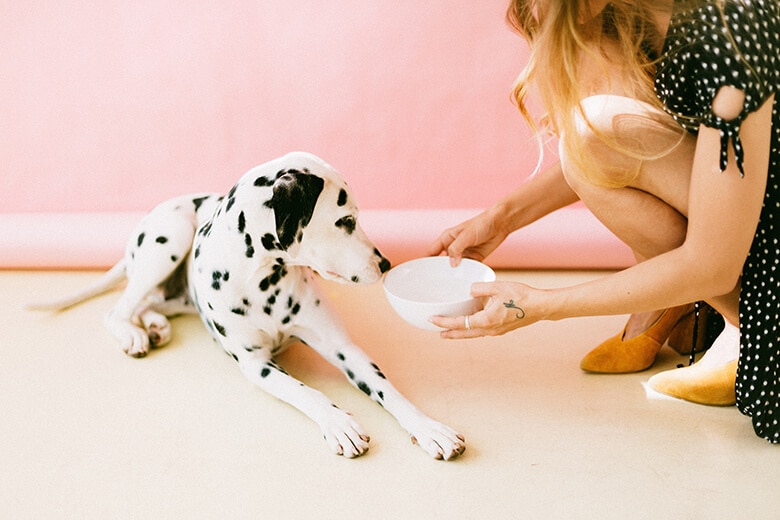
To keep your dog healthy, it’s important to choose the right kind of bowls, to wash them daily and to disinfect them once a week.
Plastic Bowls
Plastic bowls are popular because they are often the least expensive, and they come in a great assortment of colors and styles. Unfortunately, plastic water bowls register the highest levels of bacteria. This is due to the scratches that form in plastic bowls over time, producing perfect nooks and crannies for bacteria to breed.
Plastic bowls may also contains harmful chemicals including Bisphenol A, or BPA, a synthetic estrogen frequently used to harden plastics and known to cause cancer, heart disease, diabetes and impaired brain function. Phthalates are another group of chemicals used to make plastic more flexible and resilient, and they have been linked to diseases such as asthma and cancer.
Plastic bowls may also contain a chemical called p-benzylhydroquinone, which inhibits melanin, the substance in the body that produces pigment. This chemical causes a condition called Plastic Dish Nasal Dermatitis in which pink blotches appear on pure black noses and lips.
Ceramic Bowls
Ceramic bowls are often beautifully made. They are like serving your dog’s dinner on your best china. Ceramic bowls are available in a large variety of designs, from modern to classic to baroque, and offer the design maven or art lover a many great options.
Plus, because they are often made of natural cooling materials, the bowls reduce bacterial growth and keep food and water fresh.
However, not all ceramic bowls are the same. Dog bowls are not regulated like bowls for humans, and some may contain unhealthy levels of lead in the glaze, especially bowls made in China.
Related: Behind the Creator: Meet the Company Revolutionizing How Dogs Eat and Drink
So, while ceramic bowls can be a good choice, you just need to make sure they are food-safe and lead-free. Also, just like plastic bowls, inspect bowls frequently for chips and cracks, which give bacteria places to breed.
Stainless Steel
If your goal is health, stainless steel tends to be a safe option. It’s sturdy, smooth, durable, non-porous and easy to clean. There are even plenty of cool, modern designs if you’re looking for style.
However, biofilm, which is a filmy collection of organisms, can grow on stainless steel bowls too if they are not washed frequently. If you see a slightly pink or brown scum clinging to the side of the bowl, that’s Serratia Marcescens, a bacteria that breeds in standing water.
Look for stainless bowls that have non-slip bottoms. And wash them often; just because you can’t see it doesn’t mean it isn’t there.
Bowls for Food Inhalers
Dogs that hoover their food as if they haven’t eaten in a week may be tempting fate. Eating too fast can lead to choking if the food is literally inhaled instead of swallowed. Dogs that are speed-eaters are also more at risk for vomiting.
Certain large breeds, like boxers, with deep, narrow chests that eat too fast are at risk for a condition called gastric dilatation volvulus, commonly known as bloat. Bloat is life-threatening. It can lead to a twisted or ruptured stomach, which is deadly.
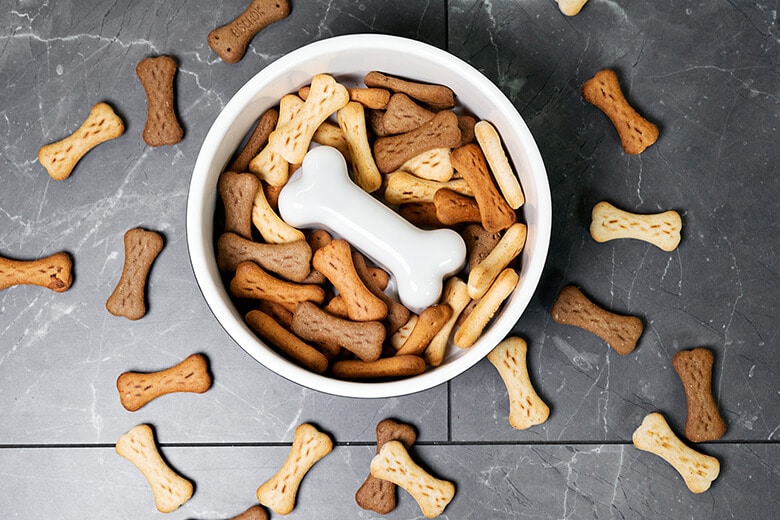
Some food bowls are specifically designed to slow down speed eaters. Called slow feeders, they have are designed with shapes, obstacles or mazes in the bottom that force dogs to forage and dig for the food, which slows down their eating speed.
How to Properly Clean Your Dog’s Bowls
No amount of cleaning will eliminate bacteria and germs if you don’t use an effective cleaning product and technique. Just a quick rinse isn’t going to do the trick.
The most effective method is to use a dishwasher on its hottest setting. Once a week, soak the dishes for 10 minutes in a solution of 1 tablespoon of bleach and one gallon of water. This will kill any bacteria and germs, including Parvo. Then run through the dishwasher using your regular dishwasher soap.
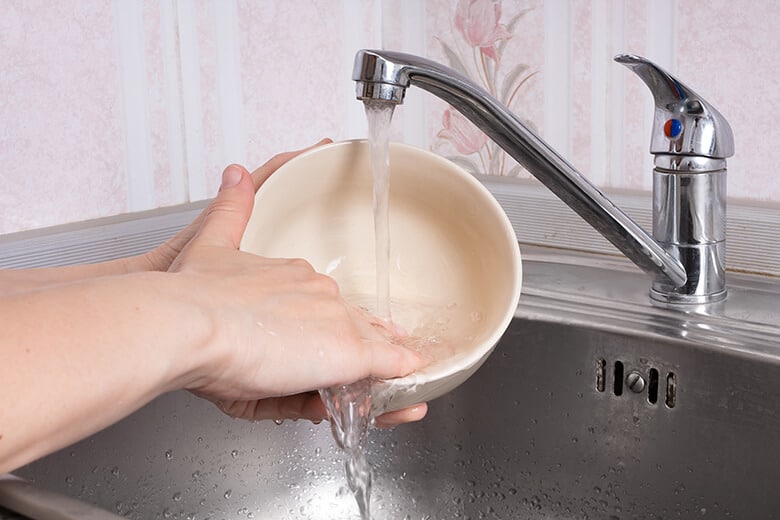
If your only option is handwashing, use the hottest water you can stand. Wash the dishes with a separate sponge or cloth to prevent any bacterial contamination with your human dishes. Disinfect with the bleach solution once a week, then wash with your regular dishwashing liquid and rinse very thoroughly.
If you want a more eco-friendly option, you can also sanitize dishes by mixing equal parts white vinegar and water and soaking or combining equal parts baking soda, warm water and salt and scrubbing with a sponge.
Both food and water dishes should be washed thoroughly between each use. That means every time you refill the water bowl, wash it with hot, soapy water first.
Related: A Beautiful Dog Bowl That Is Eco-Friendly and Guaranteed For Life? Yes, Please.















